Mechanical engineering is a fundamental academic field required for a wide range of industrial fields, such as the environment, robotics, materials, aviation, space, transportation, medicine, and more. This field has contributed to the innovation of various technologies which have helped enrich people’s lives. In addition to traditional fundamental technologies, mechanical engineering continues to evolve and develop by constantly incorporating new technologies and theories that respond to the changing demands of industry and society. This faculty offers a distinctive curriculum that provides academic classes dealing with various phenomena; from the nano- and microscopic level of atoms and molecules, to the macroscopic scale of environments and society. It also cultivates the ability to consider problems from various perspectives. We are seeking students who are interested in manufacturing, physics, mathematics, humanity, society and the environment. We are looking for those who want to take on the challenge of innovating technology and advanced materials to help develop the technology of the future.

Robotics
the inspection of social infrastructure with robots.
Create a sustainable society supported by robots.
A society that uses natural resources as if they are limitless and creates and destroys public buildings and other infrastructure is becoming a thing of the past. Advanced robot technologies are the focus of our attention during this transition to a sustainable society, which uses what it has with maximum efficiency while leaving resources intact for future generations.
When humans dive underwater to examine ecosystems, sometimes it may be difficult to observe living organisms that can flee quickly. Also, deteriorated bridges and tunnels may be dangerous for people who go inside for inspection. In addition, sometimes data cannot be collected accurately due to variations in individual evaluation levels, while a decreasing workforce makes it difficult to secure qualified personnel. In order to solve these problems, we are working in cooperation with the Stock Management Research Center of the Graduate School of Engineering to develop robots that will be able to replace people in monitoring tasks.
A monitoring robot is a collection of knowledge from multiple fields.
Currently, we are developing a small fish-like robot called FOCUS for the observation of lake ecosystems, a bridge inspection robot called BIREM, and a concrete structure inspection robot called HORNET.
The purpose of FOCUS is to recognize, track and photograph fish. Improvements are currently being made to FOCUS. Our magnetic robot BIREM can move along any side of iron bridges. HORNET hovers above non-magnetic concrete structures, gently attaching to them with claws, which helps it achieve higher control stability, wind resistance and lower power consumption compared to ordinary drones.
To develop these mobile monitoring robots, it is necessary to master all the parts of mechanical engineering, electrical engineering and information engineering. Although it may be hard, this development process can be utilized when working on manufacturing products for society. With AI and IoT related news coming out every day, the current age, which is also called the fourth industrial revolution, may be the age for those who like all things robotic. Let robotics help deliver you to your own desired future.
Mechanical Engineering Research Areas
Energy Science and Environmental Technology
In the domain of environmental energy, we perform education and research in regards to mechanisms of energy generation, as well as on the improvement and control of their efficiency in regards to their utilization. In particular,
(1) Environmental thermal engineering related to air conditioners and energy use in urban areas
(2) Thermal process engineering for production facilities and equipment utilizing heat and water vapor
(3) Fluid Engineering related to flow phenomena involving surface tension and the disintegration of liquid films
We work in the three fields listed above. The characteristic of this domain is active devotion to the development of power generating devices which utilize renewable energy (solar and hydraulic) in addition to the development of conventional thermal fluid machines that utilize fossil fuels.
Environmental Thermal Engineering
We promote the development of heat driven pumps which utilize water phase change, analysis of current situations and prediction of future situations with energy consumption, heat islands and global warming, facility mitigation using high efficiency heat engines and refrigeration based air conditioners, and utilization of solar thermal energy. We promote research regarding how to achieve low environmental impact and high efficiency energy systems required for a sustainable society.
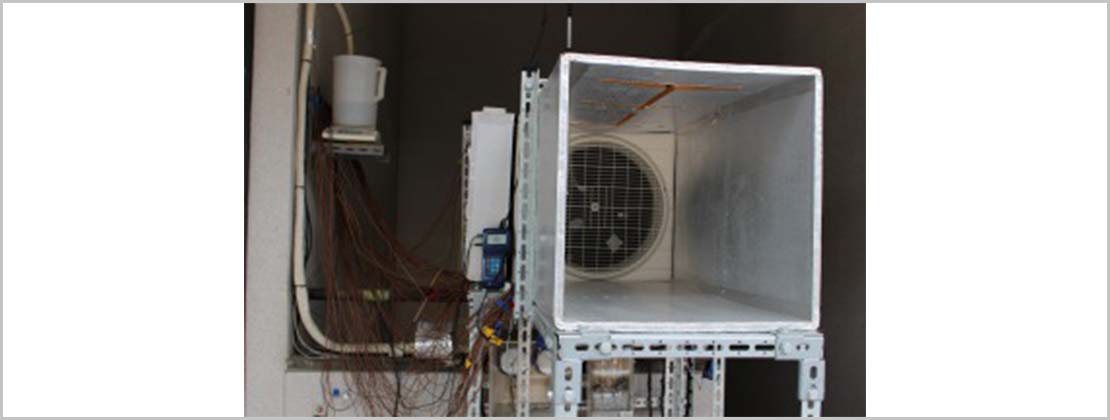
- Equipment to evaluate actual performance of indoor air conditioners (outdoor machine + wind tunnel)
Thermal Processing and Engineering
The manufacturing and processing of raw chemicals, parts, food, agricultural products, and more, requires not only improvement in product quality but also efforts to save energy and reduce environmental impact. We are working on the development of methods and devices to optimize the manufacturing process by carefully using high temperature steam (superheated steam), as well as air in various conditions of temperature and humidity, while taking into account the thermal properties of materials.
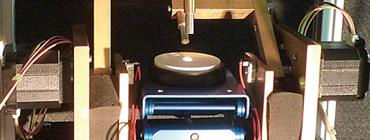
- Optical device for performance evaluation of retroreflective materials
Fluid Engineering
We are analyzing heat and momentum during the transfer of high temperature fluids flowing inside ducts as well as researching efficient stirring methods to transfer heat to the duct walls without increasing the flow resistance. We also study the disintegration of the liquid films of various aqueous solutions of surfactants, and are developing methods to freely move droplets on walls by laser.
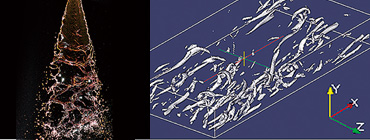
- Aqueous solution of a surfactant is ejected from a spray nozzle
- Numerical simulation of the flow in a duct and visualization of the vortex
Researchers
*Click to view researcher profiles
-
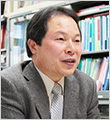
Prof.
NISHIMURA Nobuya -
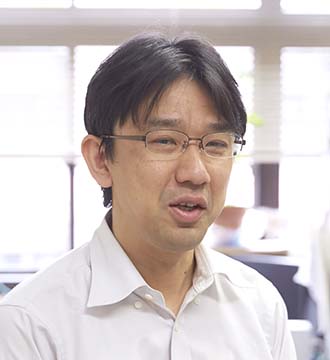
Prof.
IYOTA Hiroyuki -
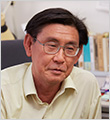
Prof.
KATOH Kenji -
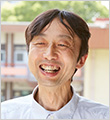
Assoc. Prof.
WAKIMOTO Tatsuro -
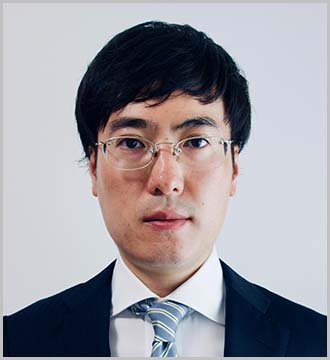
Assoc. Prof.
OHMORI Takeshi -
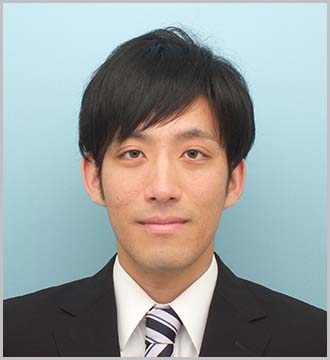
Lecturer
MASUDA Hayato -
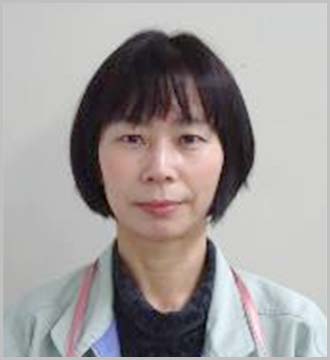
RA
(Cross Appointment)
FUJIMOTO Emiko
System Dynamics
The domain of system dynamics offers specialized education in the fields of vibration engineering, control engineering, robot kinematics, measurement engineering, intellectual material engineering, and more. We also conduct research in design, manufacturing, application, evaluation and performing diagnoses on advanced mechanical systems, intellectual materials and devices. Currently we are engaging in the diagnosis of social infrastructure related mechanical system improve the speed of defect detection, non-destructive material evaluation to ensure the safety of structures, engine control to reduce environmental load, the development of various robots, measurement and evaluation of living organisms and the development of new devices using magnetorheological fluids.
Machine Dynamics
We are researching methods to evaluate and diagnose the state of machinery and infrastructure, as well as robot technologies that will improve social welfare. In regards to machine evaluation, we are developing measurement, signal processing and data processing methods. For infrastructure inspection, we are developing new image processing technique and bridge inspection helicopters.
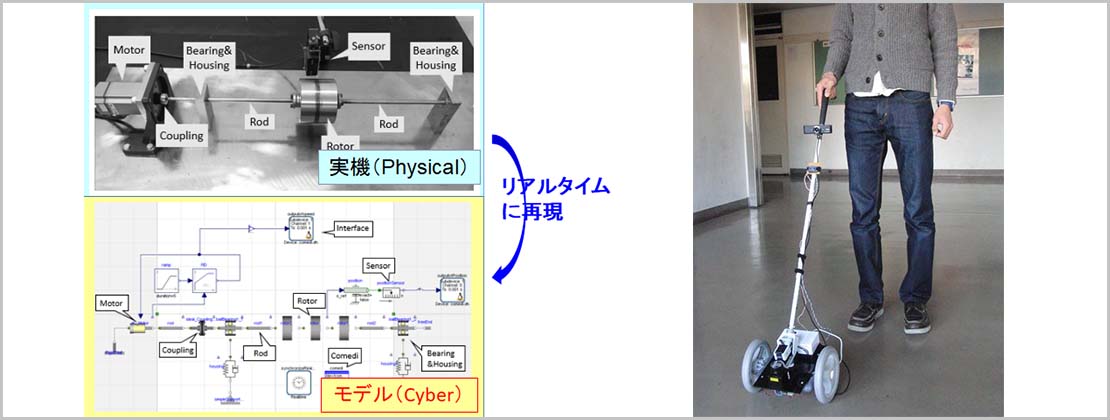
- Diagnosis and life expectancy forecast of a machine by digital twin
- A robot supporting visually impaired people walk on their own
Materials Modeling and Evaluation
Our research topics are the nondestructive evaluation of materials and structures, as well as vibration control. For example, we are studying monitoring methods for resin flow and curing by using ultrasonic waves for the efficient molding of high-quality CFRP as well as developing compact dampers with magnetorheological fluid for vibration control.
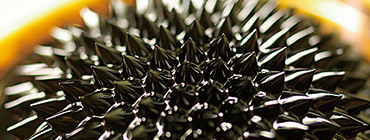
- Needle-like structures of magnetic fluid formed along the magnetic flux of a neodymium magnet
Power System Engineering
We are conducting research with the aim of optimizing engines and transmissions through utilizing various system structures and control theories, with the goal of developing clean vehicles with extremely low fuel consumption. We are also working on the control and development of self-driving vehicles that can drive using only information derived from images.
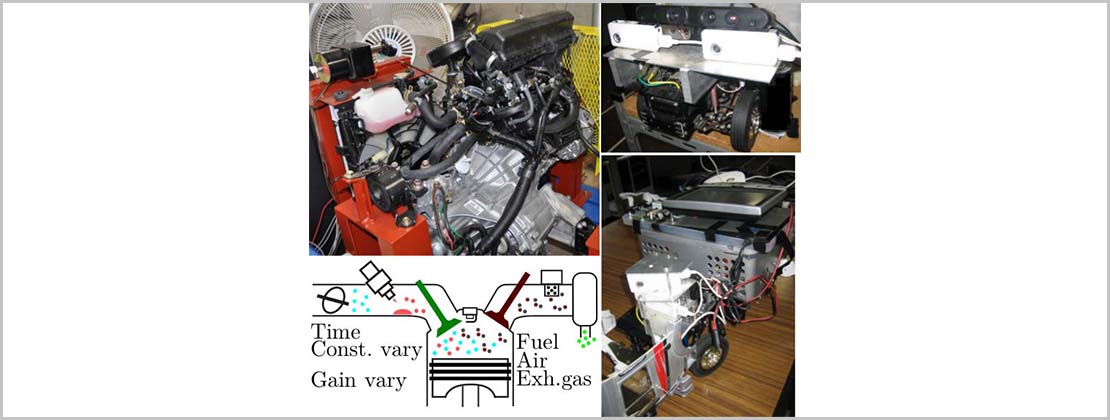
- Aiming for extremely clean and intelligent vehicles
Robotics
We are researching and developing compact mobile robots which can be used in investigations and inspections in hard-to-reach places such as underwater as well as under bridges. Analysis on underwater and aerial robots is performed using numerical fluid dynamics to improve driving thrust. We are also conducting research on biological functions such as blood flow.
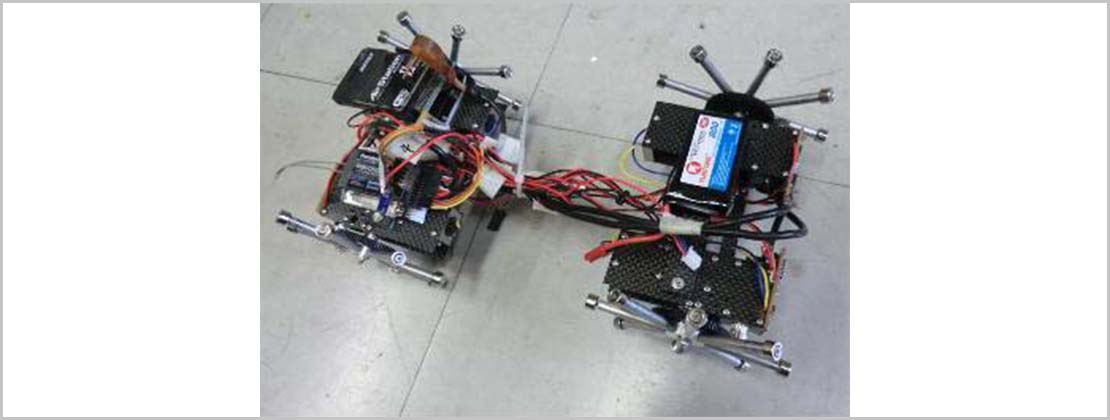
- Bridge Inspection Robot BIREM
Researchers
*Click to view researcher profiles
-
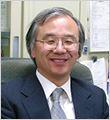
Prof.
KAWAI Tadao -
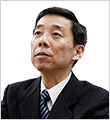
Prof.
YAMASAKI Tomohiro -
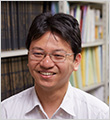
Prof.
TAKADA Yogo -

Assoc. Prof.
TAKIYAMA Takeshi -
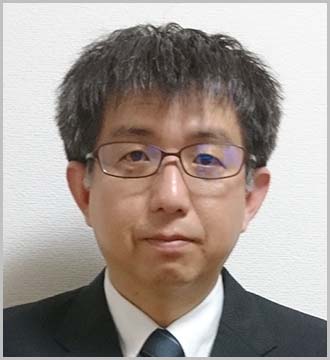
Lecturer
IMADU Atsushi -

RA
(Cross Appointment)
TAKAI Asuka -
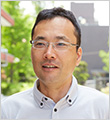
RA
OSHIMA Nobuo
Material Design
In the domain of material design, we offer an education and research about materials used in various manufacturing fields. We additionally conduct research and development on metallic and non-metallic materials, polymers, composite materials, antibacterial materials and biomaterials. For example, we are currently studying nano- and micro-scale structuring, the manufacture of intelligent hybrid composites, monitoring and modeling a materials behavior, and more. Our research has received worldwide attention, having created domestic and international trends in many fields.
Production Engineering
For fabricating highly functional nano-structured devices in future technology, it is essential to develop the ways to control structures and compositions of materials at the atomic level. We aim to establish the fundamentals for controlling the modes of atomic binding in solids via excitation-induced atomic reactions. In this laboratory, we are also researching the interaction between microorganisms and materials, microbially-influenced corrosion that causes enormous losses, as well as developing antibacterial metallic materials as a measure against nosocomial infection and food poisoning.
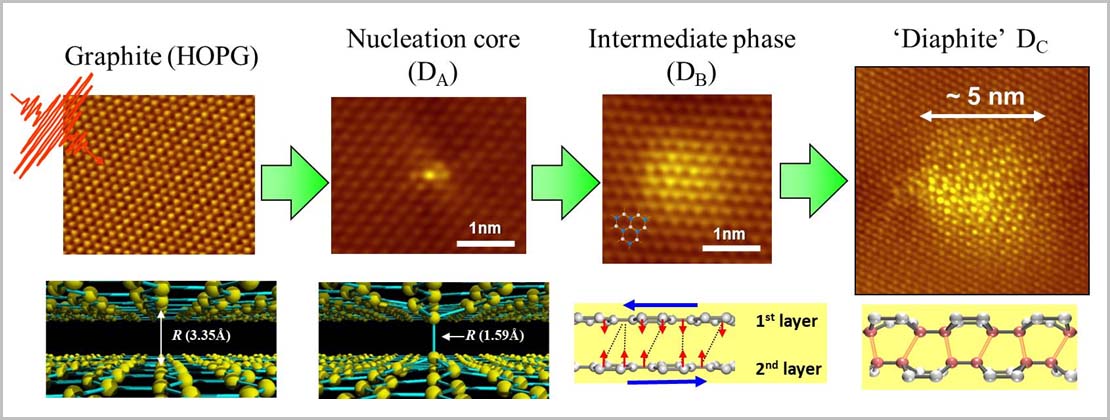
- Three types of novel nano-scaled structures formed on the photo-excited graphite surface and their structure models.
Materials Functioning and Engineering
We are investigating research related to the development and evaluation of innovative and highly functional materials that would allow structural and functional control at different levels, including everything from a molecular (nm) to macroscale (mm) one. We also conduct research into structural control in regards to advanced ceramics on microscopic and macroscopic levels, as well as physical and chemical investigations for environmental purification, energy, biotechnology, medical and dental applications.
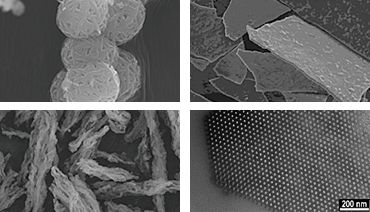
Smart Composites Engineering
We are conducting research and development into new materials that would have a sensing function. This can be achieved by embedding sensors in the materials. Our goal is the development of new high performance materials that will be able to perform sensing functions by integrating lightweight and high strength composite materials with fiber optic sensors that have a small diameter and can be easily embedded into materials.
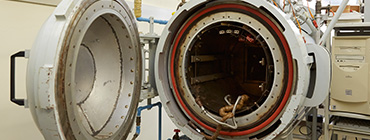
Materials Phyisics and Mechanics
We deal with the metallic materials and polymers that are the most fundamental materials supporting our social infrastructure. We work on the development of high-strength, ultrafine grained materials and nano-multilayered films produced using nanotechnology, scanning electron microscopy to observe lattice defects, the evaluation of the heterogeneous deformation of materials, homogenization methods using finite element analysis and other more.

- Grain refinement of copper single crystal
Researchers
*Click to view researcher profiles
-
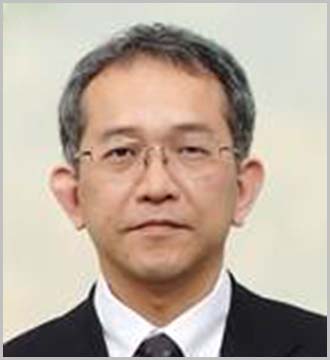
Prof.
KANASAKI Junichi -
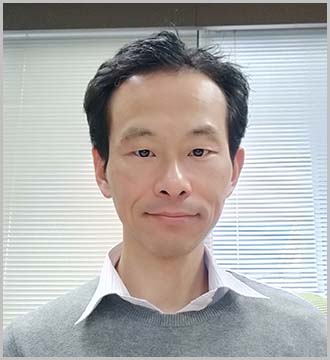
Prof.
TANE Masakazu -
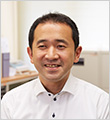
Prof.
KANEKO Yoshihisa -
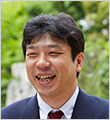
Assoc. Prof.
KAWAKAMI Hiroshi -
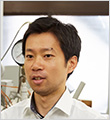
Assoc. Prof.
NAKATANI Hayato -
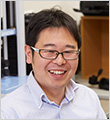
Assoc. Prof.
UCHIDA Makoto -
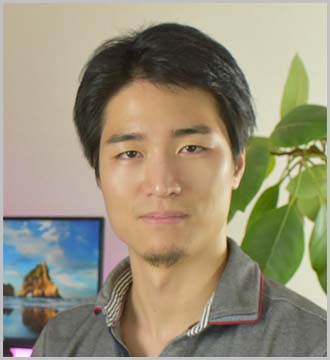
RA
HIGASHINO Shota
Admission Policy
To solve the complicated problems which arise in modern mechanical engineering, we have to approach them from various points of view. The faculty of Mechanical Engineering offers a distinctive curriculum that provides academic classes dealing with various phenomena, from a nano- and microscopic scale, such as atoms and molecules, to a macroscopic scale, such as the environment and society, and cultivates the ability to consider problems from various perspectives. Thus, we are seeking students with the following qualities;
- Those interested in manufacturing, physics and mathematics, humanity, society and the environment
- Those who desire to develop advanced materials and machines for the next generation
- Those with the basic academic abilities (in particular mathematics, science, and foreign languages) that are necessary to learn mechanical engineering
- Those who are willing to think logically and address an issue by themselves
- Those who can exchange opinions with various people and can cooperate well


